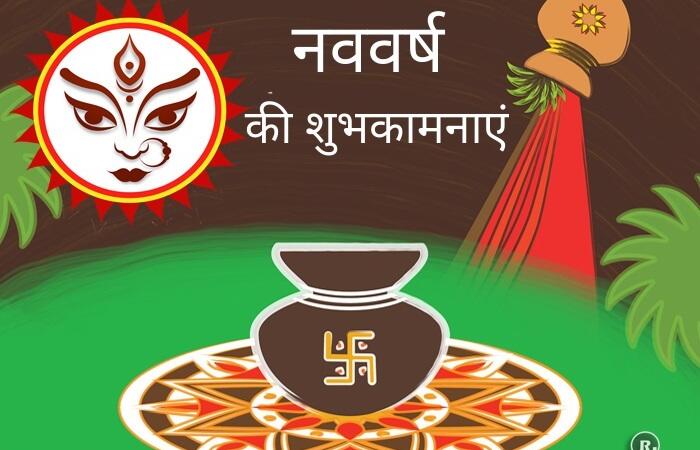Meaning and Significance of Bindi and Sindoor

Vermilion traditions:
Women wear two kinds of marks:
i) Between the eyebrows – This is called Bindi (decoration), it symbolizes many aspects of the Hindu culture.
Bindi was traditionally worn with vermilion, but these days there are other forms of bindi – with adhesives, as a paste, as a liquid, etc, that are convenient for wear. In the southern part of India, unmarried girls wear a bindi on their forehead even before the wedding. In the north, bindi (especially vermilion) only comes after the wedding. So there is a bit of a cultural difference here.
ii) At the edge of the partition of the hair — This vermilion mark is for married women with living husbands. The groom puts this mark on the bride as part of the wedding rituals. You can read the traditions here: Sindoor
The bindi placed at this position is said to retain and enhance this energy, strengthening one’s concentration. The word ‘Bindi’ is derived from the Sanskrit word ‘Bindu’ which means ‘a point‘ or ‘a drop‘. Bindi is a colored dot that is placed on the forehead of both men and women in Hindu Dharma. The origin of the bindi starts way back in ancient times but it has lost this significance in modern times and is mostly worn all over the world as an accessory. Bindis have a special significance even today in the Indian tradition. There are different colors worn for different occasions and stages in life. A married woman always wears a Red-colored Bindi as this shows true love and prosperity. A black bindi is never adorned by a married woman as this is considered inauspicious. Though most women these days don’t follow these rules of color anymore. Men also wear a Tilak during pujas or ceremonies in India.
The bindi significance in a married woman
If a woman wears a red bindi it shows that she is married. Widows in India do not wear bindi normally. But they are allowed to wear a black bindi in Southern India. Their black bindi shows their loss. However, young girls are free to wear bindi of any color. The red bindi in married women signifies true love and prosperity.
The bindi in a spiritual way
In a Spiritual view, bindi plays the most important role in Hindu culture. Every morning a Hindu takes a bath and sits in prayer just to seek the absolute truth through every prayer. However, it is true that one cannot sit in prayer the whole day. So when you leave the prayer room, you are expected to put some mark on your forehead, which will remind you during the day about all the activities and the purpose of life. It is obvious you cannot see the mark on your own forehead every time so whenever you see it on another face, you will get a chance to recall the purpose of your life. The idea is to remember that all the things you are doing are dedicated to the achievement of this supreme goal of self-realization.
The meaning bindi in Society
Society has always wanted to categorize or tag people in groups. The Bindi performed a similar function in the ‘Social’ realm. The social purpose was to ward off the evil eye of the young unmarried girl by making her wear a ‘black’ Bindi. The married woman wore a red Bindi. The 4 castes wore different colored tilaks though this is not followed except in very conservative families in the villages.
1. The Brahmins who were priests or academicians wore a tilak of white sandalwood signifying purity.
2. The Kshatriyas (Kings and Warriors and Administrators) wore red tilak to signify valor.
3. The Vaishyas (Businessmen) wore a yellow tilak signifying prosperity.
4. The Sudra (service class) wore black tilak to signify service to the other classes.
The use of wearing bindi from the health point
From a health point of view, the Bindi is worn between the eyebrows where the pineal gland lies. This is an important nerve center and applying sandalwood or ash keeps the nerves cool and so keeps you cool and conserves energy. In the past, the Bindi was made from yellow and red sandalwood, red and yellow turmeric, saffron, various flowers, ash, zinc oxide. All these had cooling properties in nature. Today people wear Bindi is made with glue or glass and doesn’t benefit in any way but is more of an accessory.
On a spiritual level, what does the position of the Bindi signify?
The Ajna Chakra is considered to be the place of the “third eye” where one applies the Bindi. The Ajna Chakra is the site where one finally loses Ahamkara (ego or sense of individuality) when one achieves self-realization or reaches a higher level of spirituality. It means seeing and helping others to see the deeper meanings of the situations in their lives.
The different kinds of Bindi
In Vaishnavas, the red colored bindi is applied as a V shape with a white I inside it, showed they were worshippers of God Vishnu. While the followers of Shiva applied ash-colored powder as horizontally on their foreheads as three lines. A red bindi means married in women, black bindi was worn in Southern parts of India by unmarried girls to ward off bad luck.
Sindoor
Sindoor is traditionally applied at the beginning or completely along the parting line of a woman’s hair.
History and Significance of Sindoor
Sindoor or vermilion holds a lot of importance in Indian society. The tradition of application of sindoor in the parting of hair by married Hindu women is considered extremely auspicious and is being carried on for centuries.
Symbolic of Married Hindu Woman
In traditional Hindu society, wearing sindoor is considered a must for married Hindu women. It is a visible expression of their desire for their husband’s longevity. Traditionally, therefore, widows did not wear vermilion. Sindoor is applied for the first time to a Hindu woman during the marriage ceremony when the bridegroom himself adorns her with it. The ceremony is called Sindoor-Dana and is very much in vogue even in present times. Religious scholars say that there has been no mention of this ceremony before the Grihasutras hence it is considered to be a relatively new practice.
Astrological Significance of Sindoor
According to Hindu astrology, Mesha Rashi or the House of Aries is on the forehead. The Lord of Mesha is Mars and its color is red. It is believed to be auspicious. This is why the red sindoor is applied at the forehead and at the parting of the hair. Both are signs of saubhagya (good fortune). Sindoor is also considered to be the symbol of the female energy of Parvati and Sati. The tradition of wearing Sindoor or vermillion is said to have traveled through more than 5,000 years of Hindu culture. Female figurines excavated at Mehrgarh, Baluchistan, show that sindoor was applied to the partition of women’s hair even in early Harappan times. Besides, legends say that Radha, the consort of Lord Krishna, turned the kumkum into a flame-like design on her forehead. In the famous epic Mahabharata, Draupadi, the wife of the Pandavas, is believed to have wiped her sindoor in disgust and despair. The use of Sindoor has also been mentioned in The Puranas, Lalitha Sahasranamam, and Soundarya Lahharis.
Physiological Significance of Sindoor
It is interesting to note that the application of sindoor by married women carries physiological significance too. This is so because Sindoor is prepared by mixing turmeric-lime and the metal mercury. Due to its intrinsic properties, mercury, besides controlling blood pressure also activates sexual drive. This also explains why Sindoor is prohibited for the widows. For best results, Sindoor should be applied right up to the pituitary gland where all our feelings are centered.
The Indian men all over the country also wear the vermilion mark, in addition to other marks.






